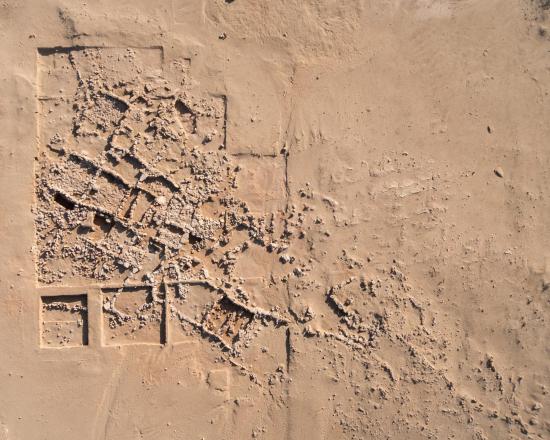Nawara Fattahova
Source - http://news.kuwaittimes.net/kuwaitis-lived-8000-years-ago/?

Bahra 1
Dar Al-Athar Al-Islamiyyah hosted a seminar on the first Bahra settlement in what is now called Kuwait at the Amrikani Cultural Center on Monday. Presented by Piotr Bielinski, Professor at the Polish Center of Mediterranean Architecture at the Warsaw University and the Head of the Excavation Mission, the lecture looked at ‘How the Kuwaitis Lived More Than 8,000 Years Ago’.
Professor Bielinski took attendees several thousand years back in time to the Al Subbiya desert. “There around 4600 BC near the seashore appeared two residential sites which seem to be the oldest permanent settlements on Kuwaiti soil and most probably in the whole Gulf basin area,” he explained.
He introduced briefly the chronology of that period in the prehistory of the Ancient Near East. “On the Arabian Peninsula we had to deal with semi-nomadic groups of pastoralist wandering across semi arid regions and sometimes collecting sea snails to enrich their daily diet.
This period was called Arabian Neolithic, in Southern Mesopotamia flourished then a culture called the Ubaid culture characterized by permanent settlements, very productive irrigation agriculture, a relatively complex economy, mass production of ceramics including painted luxury ware, wide use of first seals in the form of stamps and standardized plans of houses,” Bielinkski said. “Ubaidians were also using tools made of imported copper, what means that from an archaeological point of view they were living in the Chalcolithic period (the period of stone and copper).
Ubaid culture was the last pre-urban civilization in that part of the Near East. It was followed by a culture which gave us first cities, writing, monumental architecture and bureaucracy,” Bielinski further said. The archaeologists worked along the southern coast of the Gulf for many years and found many sites with an array of relevant artifacts. “In many places including more than 40 small fishermen villages the archaeologists discovered potsherds of imported painted Ubaidian pottery of luxury class. Such archaeological sites were spotted in Saudi Arabia, Qatar and the Emirates.
Ubaidians were the first sailors sailing along the Gulf coast and traded with local communities, and most often they exchanged sea fish for luxurious pottery,” he explained. According to him, the most important discoveries concerning relations between the two regions and two cultures were made in Kuwait. “Two archaeological sites excavated here highlighted this problem, and both are situated in Al Subbiya region. In the first, archaeologists uncovered remains of small oval or nearly rectangular houses and unearthed many findings pertinent to the contacts between the Ubaidian world and the local population.
While at the second site two concentrations of Ubaid-culture painted shards were registered. The site took its new name from the sub-region of As-Subbiya desert where it lies,” Bielinski noted. He also spoke about the structure of the building units found in these sites and houses in these units. Then he also explained the different pottery, stones, and beads found there, which unveils facts about their life activities, food, and other aspects of their life. The DAI organized the lecture as part of the 39th Annual Kuwait Book Fair activities.